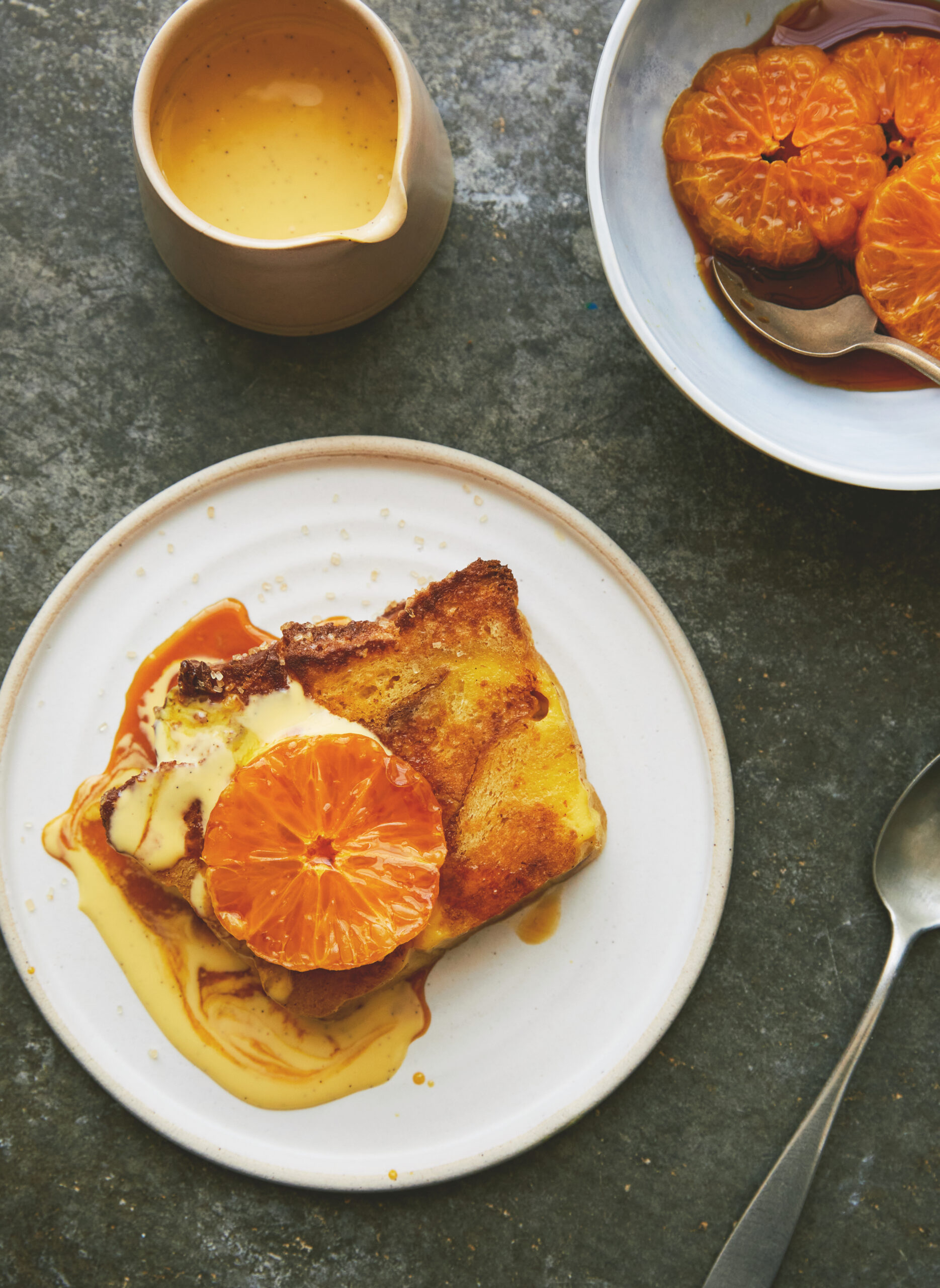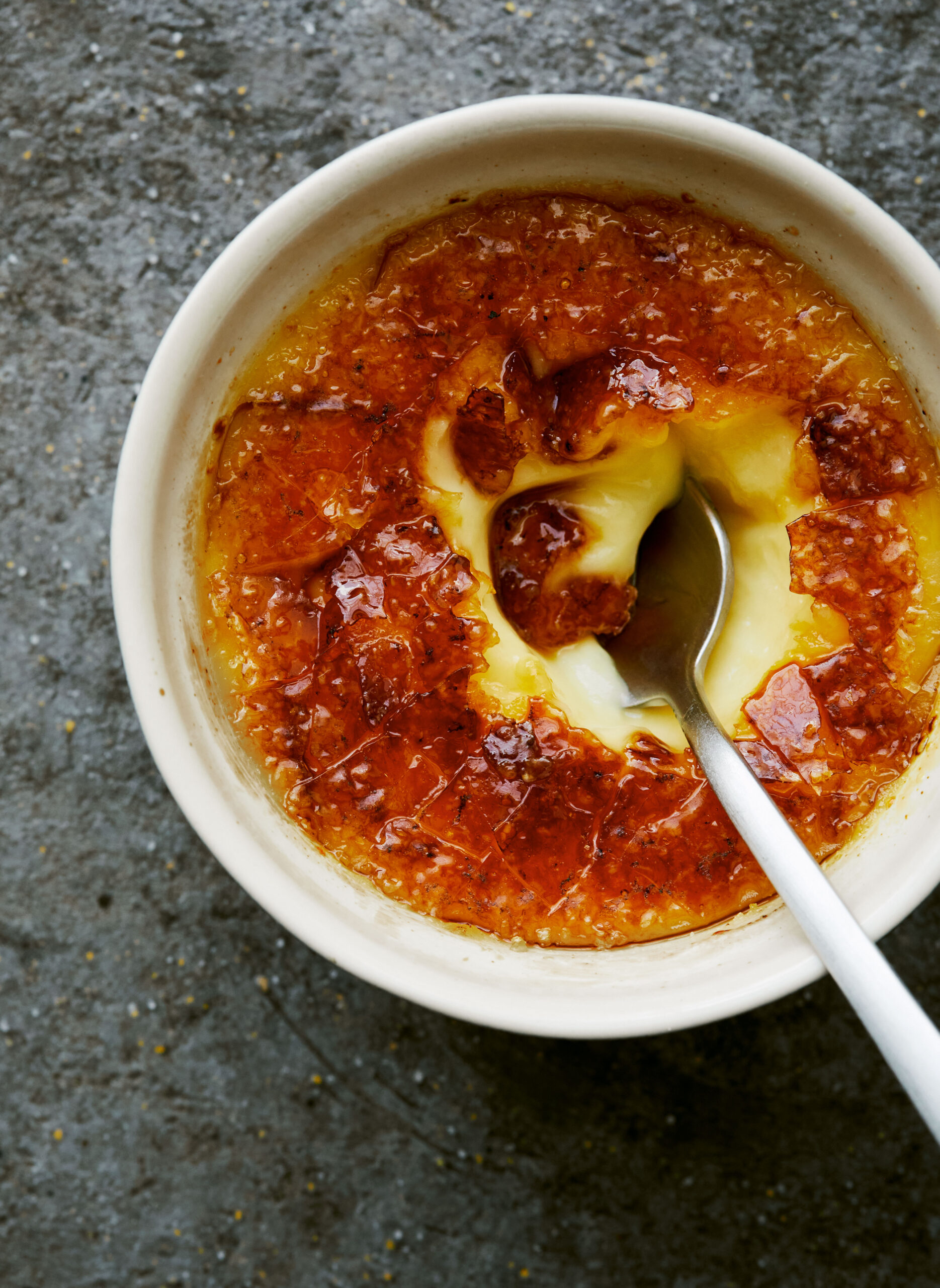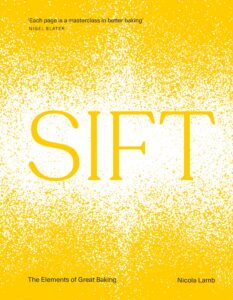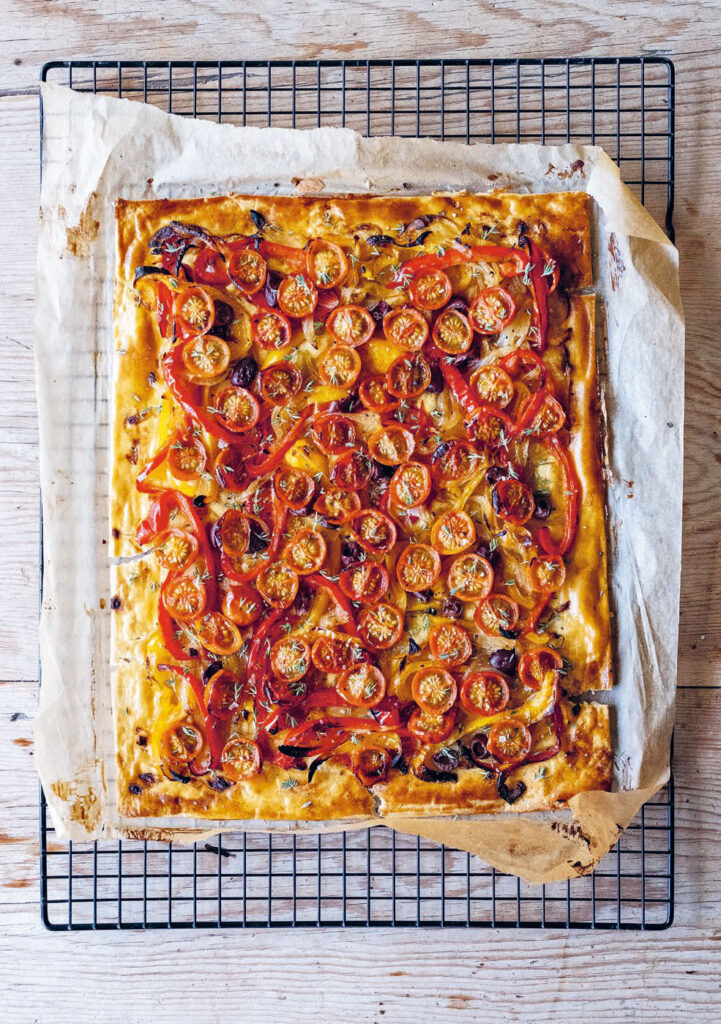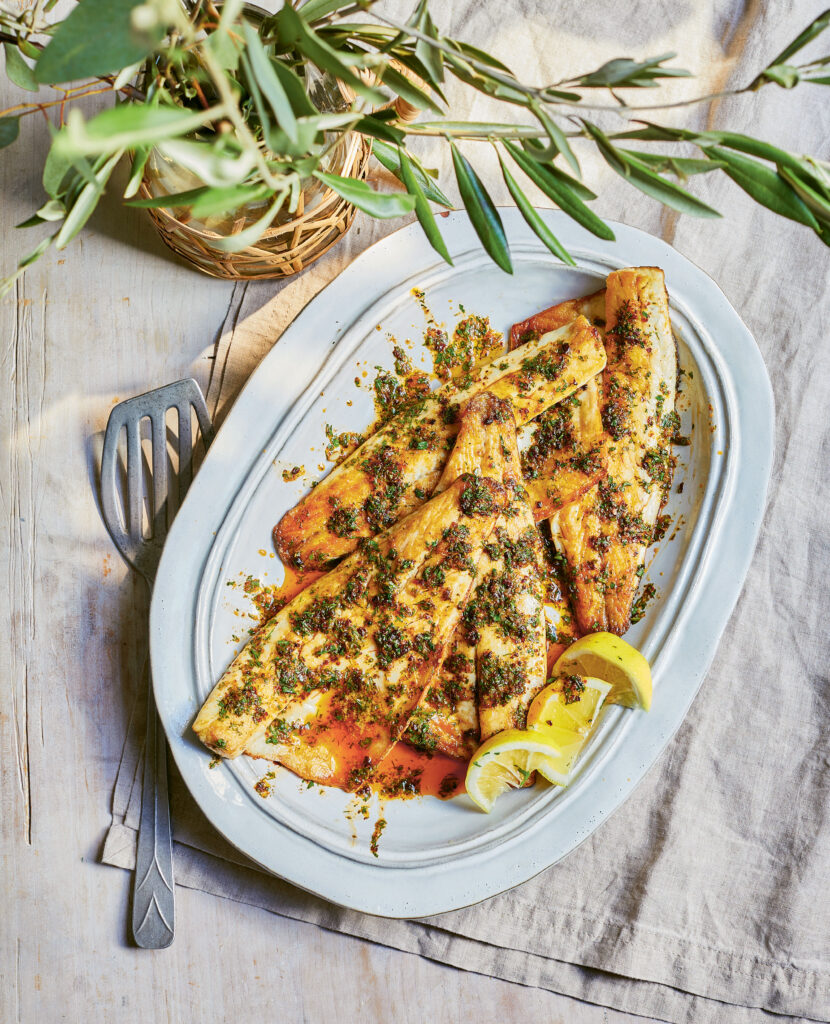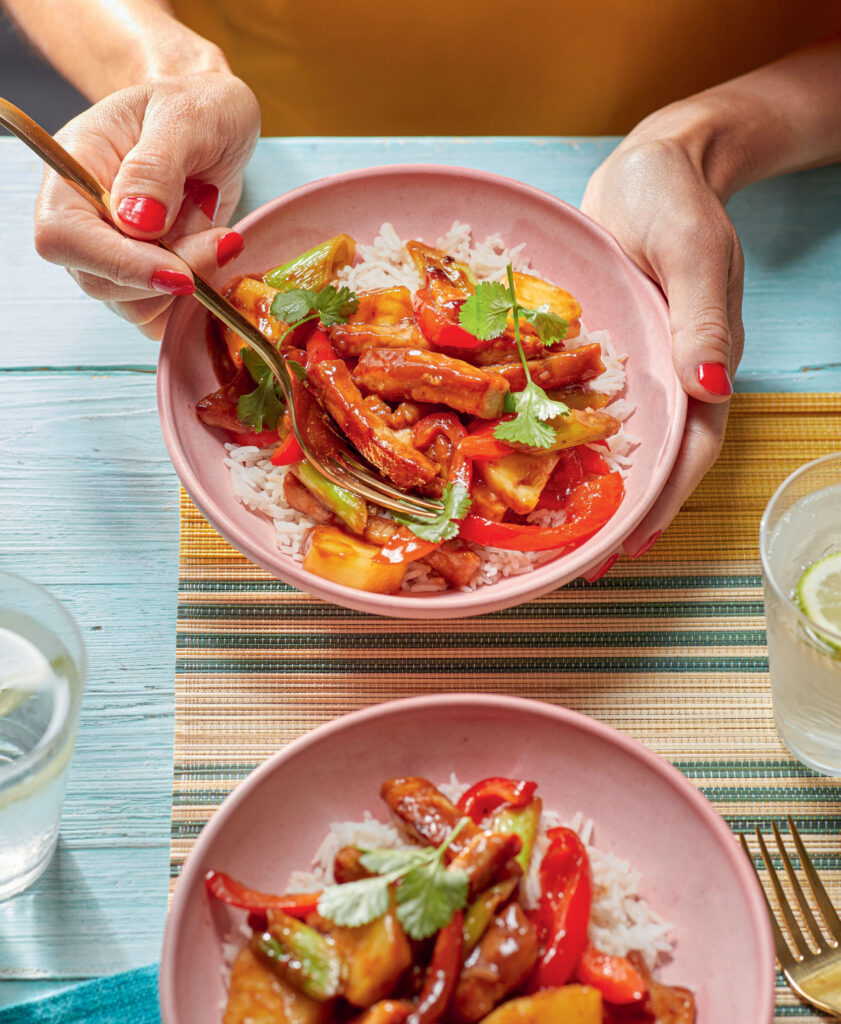Welcome to Baking Basics, a new column penned by Nicola Lamb, author of SIFT: The Elements of Great Baking. This week we’re learning how to make the perfect custard.
You can also catch up on Nicola’s previous Baking Basics columns, which covered how to make the ultimate sponge cake and failsafe batch of chocolate chip cookies.
As a nation, we love custard in all its forms: thin, thick, set, wobbling, split (ok, maybe not split, but we’ll come onto that) – it’s basically its own food group.
But what actually is it? In the simplest language, custard is dairy set with eggs and sometimes starch. It’s usually made by heating your dairy and sugar until simmering, then gently combining it with your eggs in a process called tempering. Tempering means adding a little of the hot liquid to your eggs and whisking well before returning to the stove. This helps prevent scrambling by gently raising the temperature of the eggs. After this, you can continue cooking the custard until the desired thickness is reached.
Now, what kind of dairy, which parts of an egg, what starch, and how set it is, are where things differ within the sprawling custard family tree. All of these factors can be adjusted and result in different types of custard.
From the glossy pourable crème anglaise to the spoonable crème pat, let’s take a closer look at the ingredients that affect our custards:
• Eggs: The flavour – and colour – of a custard is often defined by rich egg yolks. But beyond this, they provide the key to its texture. Eggs set and thicken custard by coagulation. This is when the proteins turn from a liquid to a solid. It’s an irreversible action (you truly cannot uncook an egg). We most commonly see whole eggs (as in lemon tarts) or egg yolks (as in almost all custards), but you can also use egg whites for a very clean, pure baked cream. When a custard splits, it’s because the egg has been heated too much and turned completely solid.
• Dairy: Usually in the form of cream and milk (ideally a combination of the two), dairy is the main vehicle for custard. When you combine eggs with dairy, the coagulation temperature of the eggs rises; dairy physically dilutes the egg proteins, making it harder for them to bond and meet. This means we can heat our custard to 82-84°C, more than 10°C higher than if you were to cook eggs alone. The more fat in your custard, taking into account the dairy component and eggs (yolks have more fat than whole eggs, for example), the thicker and richer it will be.
• Sugar: Sugar is a sweetener, but it also does a lot more than that! With the help of sugar, the coagulation temperature of eggs also rises.
• Starch: For an extra-thick custard, we bring in the starch cavalry. This is often in the form of cornstarch, but it could be flour. Starch stabilises the custard, making it even thicker through a process called starch gelatinisation (the same as thickening a gravy for your Sunday lunch!) and prevents the mixture from splitting.
• Acid: Acid actually lowers the coagulation temperature! In the case of a lemon custard, that means it will set at a lower temperature, around 72-74°C.
So what do we need to look out for in our custard recipes? The ratio of eggs to liquid is one I take most notice of; the fewer the eggs (the thickener), the more something will flow once set. It’s the difference between, say, a pouring custard and a wobbly, but firm, custard tart. The way you cook it also makes a difference; a stirred custard made on the hob will always flow more than a custard baked in a dish, like a crème brûlée, as we’re agitating the proteins as it cooks.
It’s also important to consider carryover cooking with temperature-sensitive recipes like custard – if your pan is very hot, it will continue to cook after you’ve taken it off the hob or removed a tart from the oven, so I prefer to err on the side of ‘undercooked’ if I’m not sure. And even though a digital thermometer might seem like overkill, it’s incredibly useful for guaranteeing perfect custards.
Now, the biggest question: Can you save a split custard? Sort of. If you are cooking a custard on the hob and it accidentally catches, and you can suddenly see it transform from smooth to lumpy, act quick! Pour it into a clean, cool container and grab your hand blender. Whizz like there’s no tomorrow, then pass your mixture through a sieve. It doesn’t work every time, and it’s an emergencies-only strategy, but it’s worth giving it a try before casting your lumpy custard aside.
More custard recipes you’ll find in SIFT
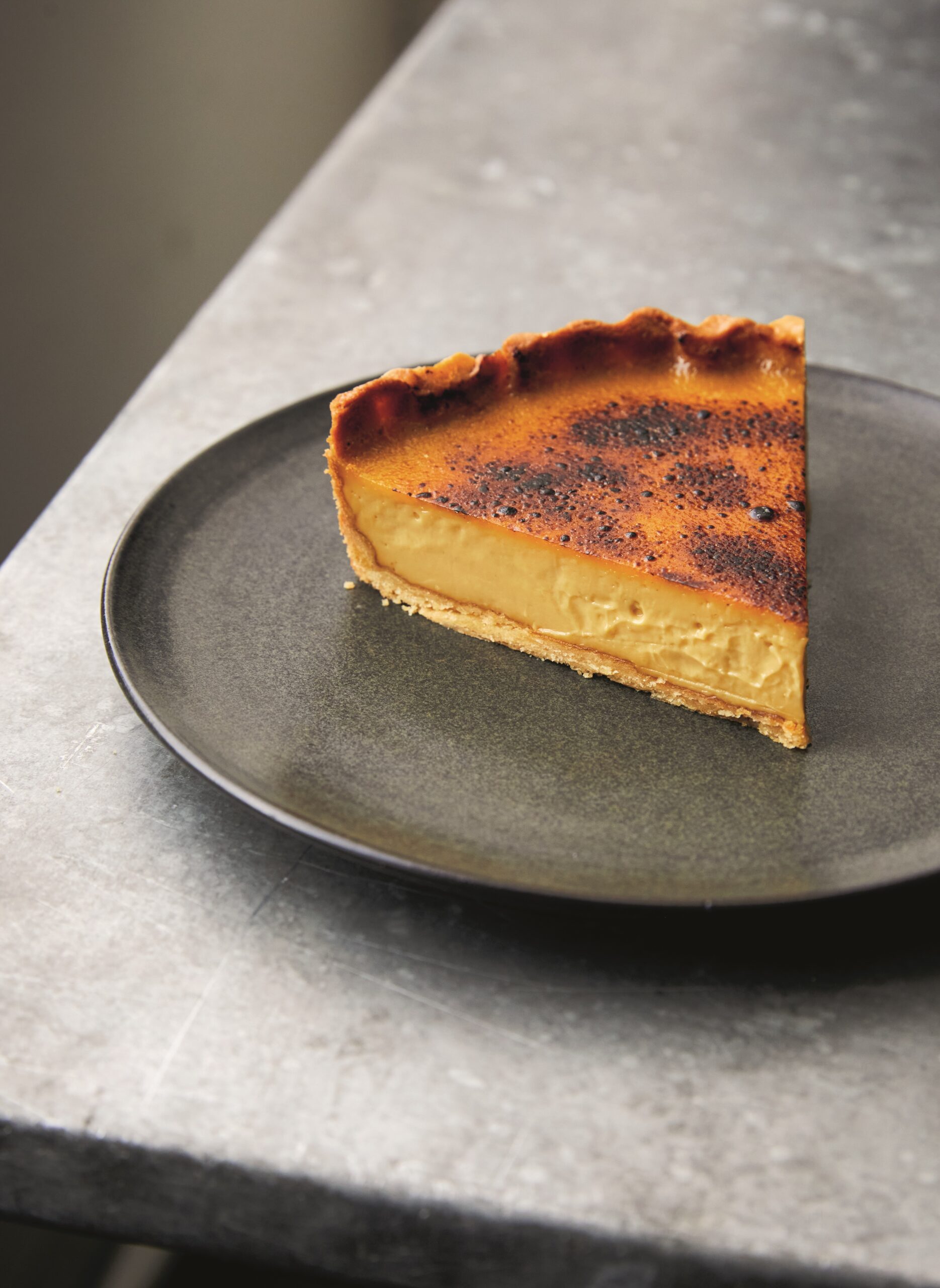
Brown Sugar Custard Tart
